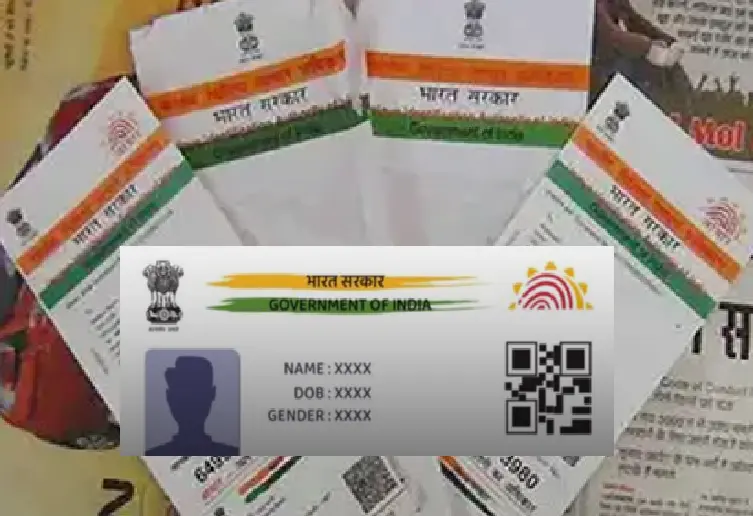
BJP leader Amit Malviya raises serious concerns over Aadhaar saturation exceeding 100% in Muslim-majority districts of Bihar.
Aadhaar Overload or Aadhaar Anomaly? BJP’s Data Shock in Bihar
In a startling revelation, BJP’s IT cell chief Amit Malviya flagged what he called “unusual Aadhaar data” in Bihar’s Muslim-majority districts. According to his post on social media platform X, Aadhaar saturation defined as the number of Aadhaar cards issued relative to the population has crossed 126% in Kishanganj, 123% in Katihar and Araria, and 121% in Purnia.
These figures stand in stark contrast to Bihar’s average Aadhaar saturation of 94%, raising eyebrows across political and administrative circles. Malviya questioned the legitimacy of these numbers, asking:
“Who are these additional Aadhaar cards made for, and why?”
The timing of this claim is critical. Bihar is undergoing a Special Intensive Revision (SIR) of its electoral rolls ahead of the October-November 2025 Assembly elections, involving nearly 7.9 crore voters. The Election Commission of India (ECI) has excluded Aadhaar from the list of acceptable documents for voter verification, citing concerns over its reliability in establishing birth and residence.
Malviya’s remarks support the ECI’s decision and hint at deeper irregularities. He also extended his concerns to West Bengal, suggesting similar Aadhaar-related discrepancies may exist there, and accused opposition parties of pushing Aadhaar as proof of citizenship for political gain.
Voter Verification Under Fire: Politics, Process, and Pushback
The SIR exercise, launched on June 24, aims to update Bihar’s voter list by adding eligible citizens and removing ineligible ones. It involves 77,895 Booth Level Officers (BLOs) visiting households to collect enumeration forms.
However, the process has faced criticism for its stringent documentation requirements, especially for marginalized groups like Muslims, Dalits, and migrant workers. About 60% of voters listed before 2003 are exempt from submitting documents, while the remaining 40% nearly 3 crore voters must provide proof of birth and residence.
Opposition parties have accused the ECI of creating barriers to disenfranchise vulnerable communities. The ECI, meanwhile, insists that the process is fair and includes a complaint redressal mechanism, allowing appeals to the District Magistrate and Chief Electoral Officer.
Malviya’s Aadhaar saturation claim adds fuel to this fire. If true, it could indicate duplicate or fraudulent enrolments, undermining the integrity of both Aadhaar and the electoral roll. If exaggerated, it risks stoking communal tensions and politicizing a technical issue.
Beyond the Numbers: Identity, Integrity, and Implications
The Aadhaar saturation anomaly isn’t just a statistical oddity it’s a flashpoint in India’s ongoing debate over digital identity, citizenship, and electoral transparency.
Historically, Aadhaar has faced scrutiny over duplicate enrollments, data leaks, and authentication failures. The Unique Identification Authority of India (UIDAI) has introduced safeguards, but gaps remain especially in rural and underserved regions.
Malviya’s claim revives concerns about Aadhaar’s role in voter verification. While Aadhaar was designed as a proof of identity, it was never meant to establish citizenship. The ECI’s decision to exclude it from the SIR process reflects this nuance, but political actors continue to weaponize the issue.
The controversy also exposes the fragility of trust in India’s digital infrastructure. If Aadhaar data can be manipulated or misrepresented, what does that mean for schemes like Direct Benefit Transfer (DBT), subsidy distribution, and e-governance?
Moreover, the communal undertones of Malviya’s statement, highlighting Muslim-majority districts, risk polarizing public discourse. While data integrity is a legitimate concern, framing it through a religious lens could derail constructive debate.
Conclusion:
Amit Malviya’s Aadhaar saturation claim has opened a Pandora’s box of questions about data accuracy, electoral fairness, and the politicization of identity. As Bihar prepares for a high-stakes election, the nation must grapple with the deeper implications of digital governance. Whether this leads to reform or rhetoric will depend on how the conversation evolves.
Stay updated with the latest news on Rapido Updates. Keep yourself updated with The World, India News, Entertainment, Market, Automobile, Gadgets, Sports, and many more